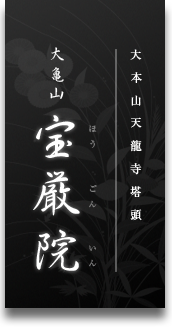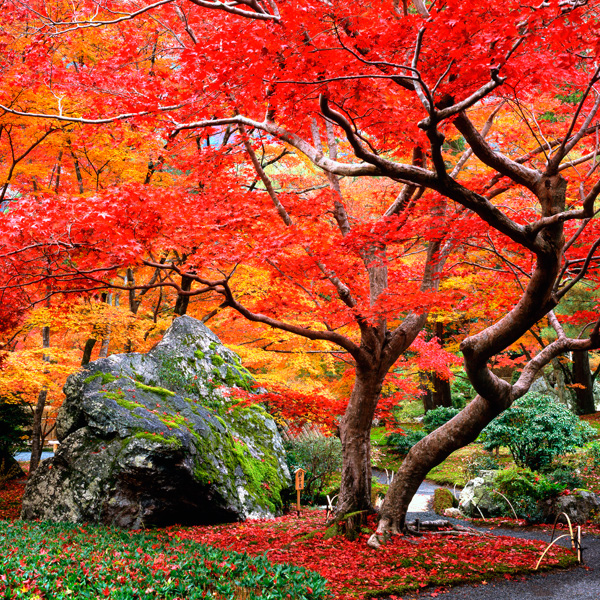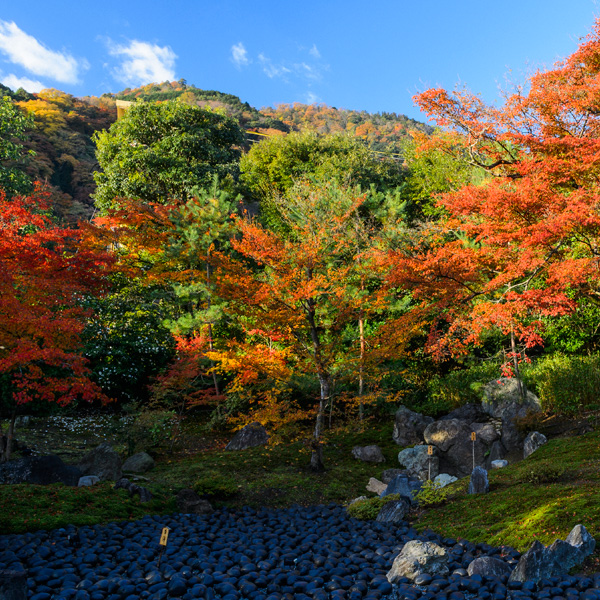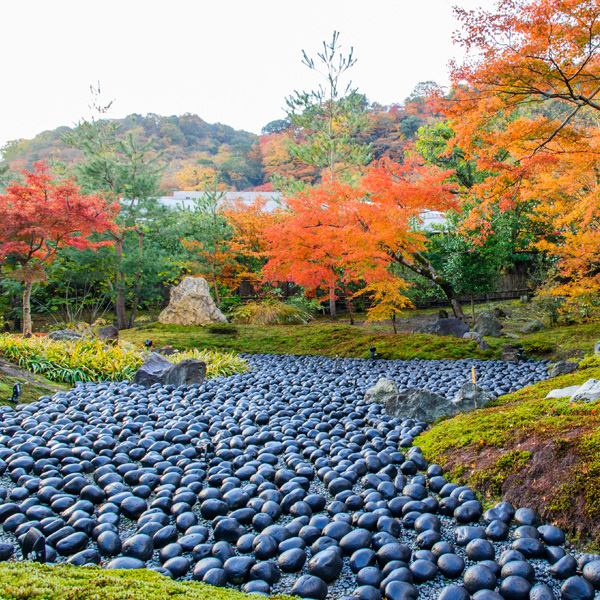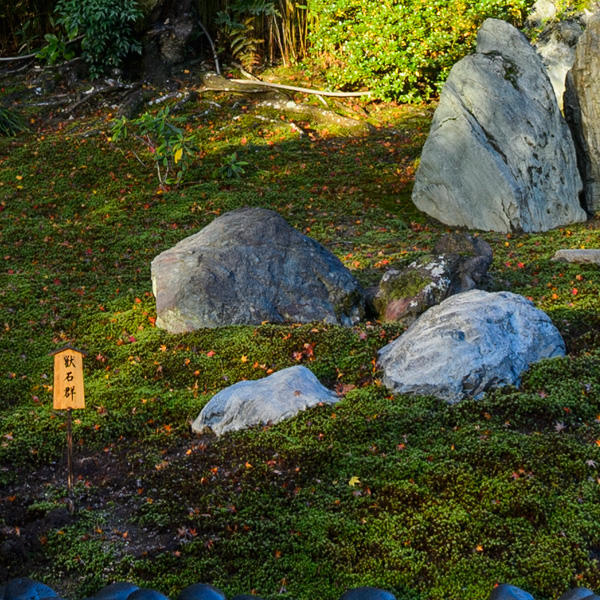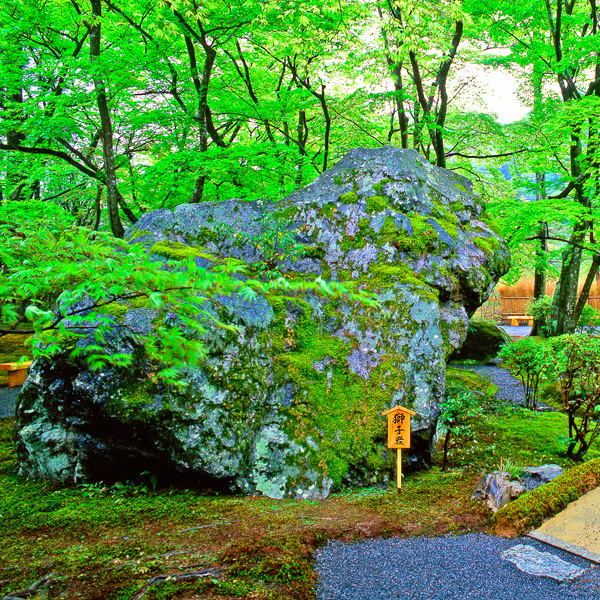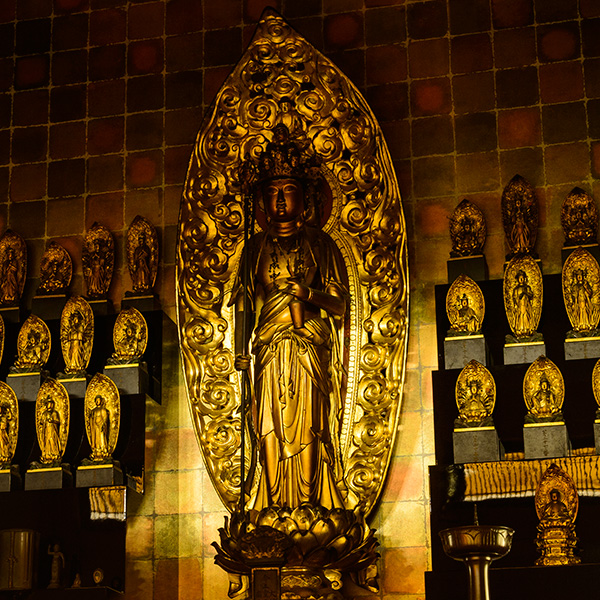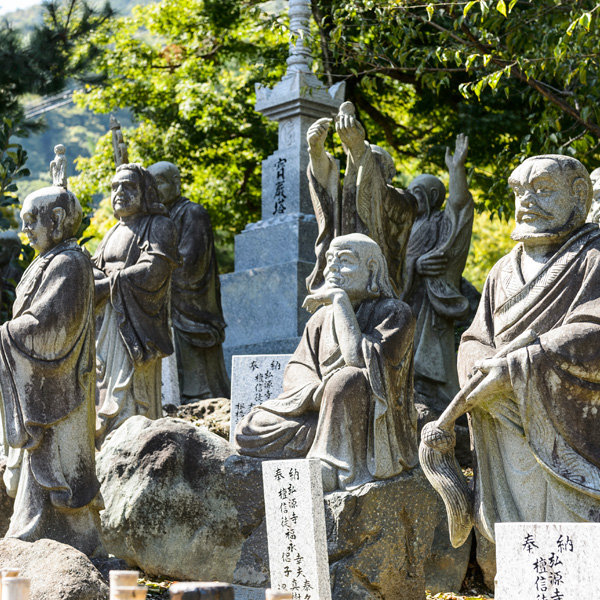About Hōgon-in
Hōgon-in, a subtemple of the Rinzai Zen head temple Tenryū-ji, was established in 1461 with support from the estate of Hosokawa Yoriyuki (1329-1392), a noted deputy of the shogun during the Muromachi period (1336-1573). Zen Master Seichū Eikō, a third-generation descendant of Zen Master Musō Soseki (the founder of Tenryū-ji), served as the temple’s first abbot.
At the time of its founding Hōgon-in was large temple located in the northern part of Kyoto (present-day Kamigyō-ku Ward). Burnt to the ground during the Ōnin War (1467-1477), it was rebuilt only to suffer further vicissitudes that saw its eventual relocation to the precincts of Kōgen-ji, a subtemple of Tenryū-ji. It was later moved to its present location in the southwest corner of Tenryū-ji’s grounds.
Hōgon-in is presently known for its historic “Lion’s Roar” landscape garden, first laid out by the sixteenth-century Zen monk Sakugen Shūryō (1501-1579). The garden employs the natural beauty of the Arashiyama area with its thick moss, its large, unusually shaped rocks, and its skillful use of the “borrowed scenery” of the surrounding mountains. The main hall, which enshrines images of Kannon Bodhisattva and Jizō Bodhisattva, is also noted for its collection of 58 sliding-panel paintings by the modern artist Noriko Tamura.
In front of Hōgon-in’s main gate is an arrangement of statues known as the Arashiyama Rakans, a rakan being a fully enlightened Buddhist sage.
With fresh green leaves in the early spring and colorful foliage in the autumn, the temple and its surroundings are a delight to see throughout the year.
